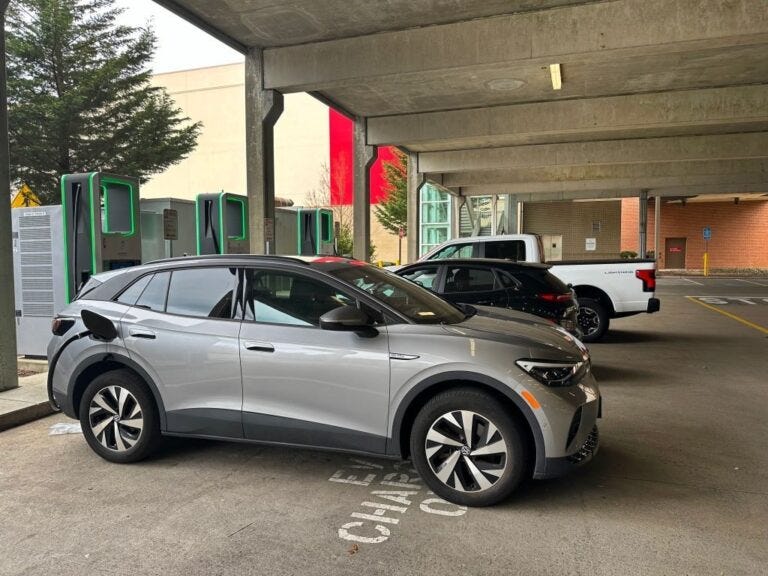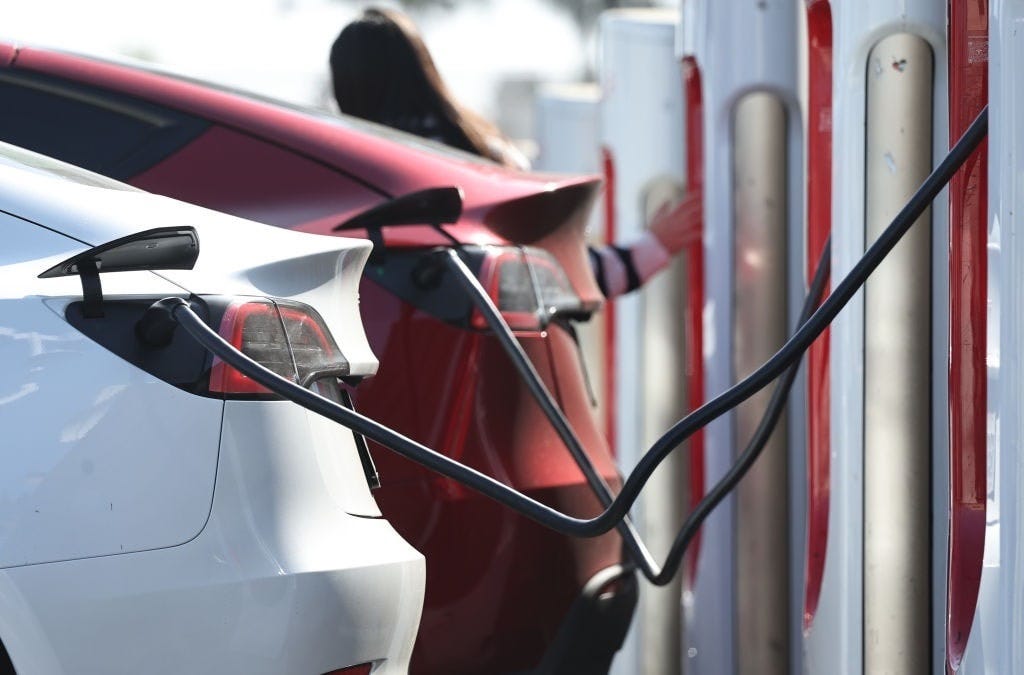(Photo by: Lindsey Nicholson/UCG/Universal Images Group via Getty Images)
The government offers large amounts of money for Americans to buy electric vehicles (EVs) to help reduce the amount of carbon dioxide in the atmosphere. Many claims about EVs and their effects on the environment often seem conflicting. As with most manmade products, it can be difficult to fully measure all the environmental impacts: the activities used to gather the materials to make them, the energy and processes to manufacture them, and the impacts of using and then disposing of them.
What Is Net Zero?
The term “net zero” refers to achieving a balance between the amount of positive versus negative impacts of a particular activity or product on greenhouse gas emissions so that the “net” amount of climate-changing gases is zero or even less. For EVs, this would mean that the vehicles reduced greenhouse gas emissions (GHG) such as carbon dioxide as much as they produce. EVs are commonly compared to gas-powered cars, which release greenhouse gases by burning gasoline.
The Environmental Protection Agency (EPA) states that even when the costs of battery manufacturing are included, EVs are cleaner for the planet because they create fewer greenhouse gases. But is this entirely true?
Ecotoxins and EVs
There are other chemicals and pollutants involved in manufacturing both EVs and gas-powered cars that are not considered by the EPA here, however, and many are toxic to humans and can pollute water, air, food, and soils. Because they are poisonous and can cause sickness, cancer, birth defects, and other health problems, these toxic chemicals are often called “ecotoxins.” Many of these can last so long in the environment that they are called “forever chemicals.” They also collect in animals’ bodies, including humans.
(Photo by Mario Tama/Getty Images)
EVs require powerful batteries to power their engines, and these require rare metals such as lithium and cobalt to manufacture. Mining for lithium and cobalt is very destructive to the lands, water, and communities where these operations are located. When EV batteries are old, they create more ecotoxin pollution when they are recycled or discarded. Gas-powered cars use much smaller batteries and do not cause as much of this kind of pollution.
Tires are another source of pollution. Studies estimate that about 6.6 million tons of poisonous rubber tire dust is emitted into the atmosphere every year by conventional cars, causing almost 80% of all microplastic pollution in the oceans. EVs use rubber tires more than 30% faster than gas-powered cars, greatly increasing these ecotoxins.
Perhaps EVs pollute less than traditional cars – even when production is factored in – when measured merely by greenhouse gas emissions. But carbon dioxide is far from the only – or, for that matter, the worst – kind of pollution.
(Originally published at Liberty Nation News.)






WHERE DO YOU PUT THE EVIL BIO HAZARDOUS BATTERY ACID THAT KEEPS ? ACID IS NOT GREEN
Here’s the thing…the EV is the latest rendition of an OLD technology (like 100 years old). What has changed is battery technology but we don’t have the material nor capacity to meet the so called green objectives. Methinks the internal combustion engine has many years of future use. In particular, the Japanese (I believe Honda) has developed a working prototype of an engine that runs on hydrogen. The only byproducts are energy and water. This makes a lot more sense. Pax